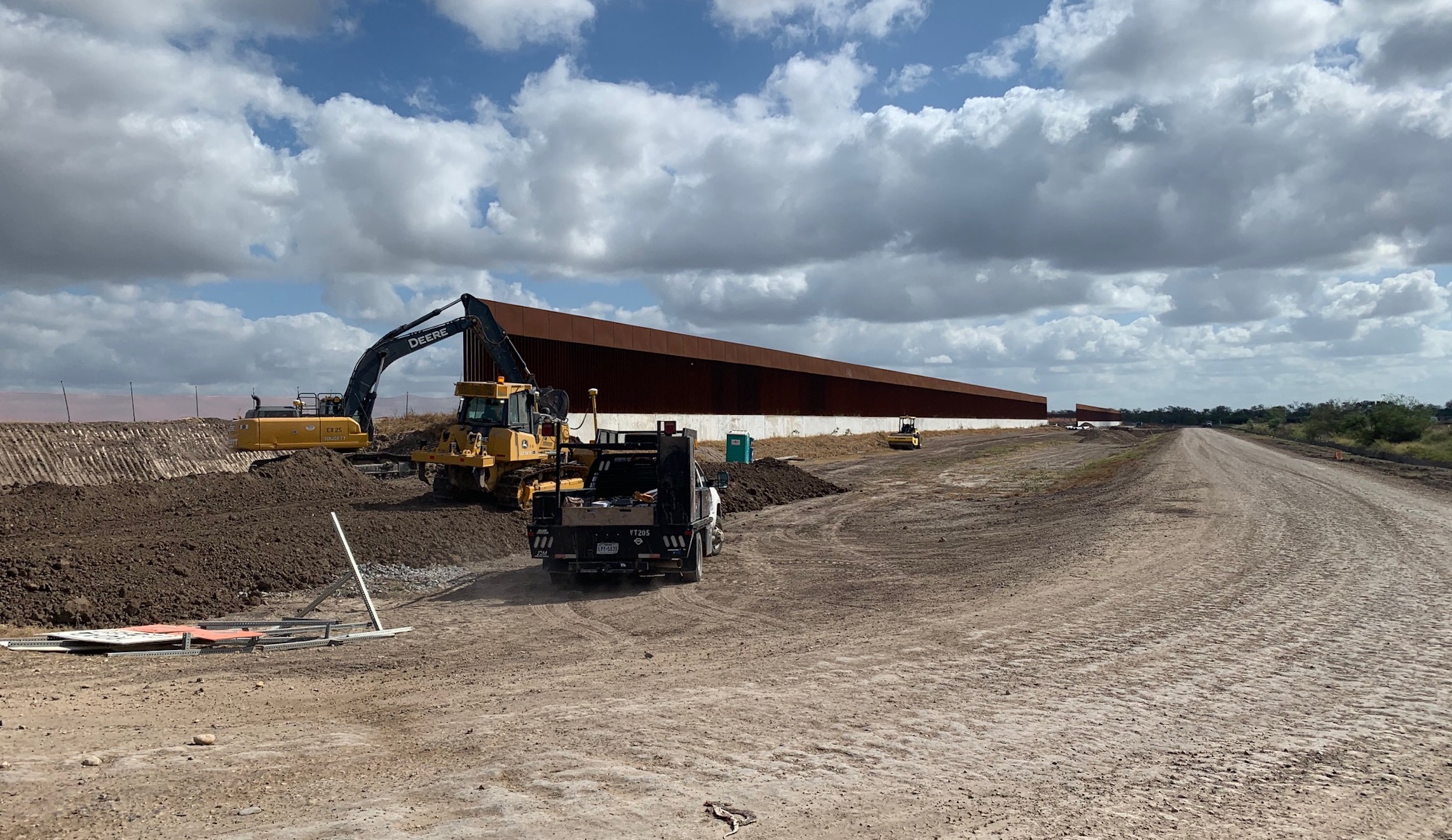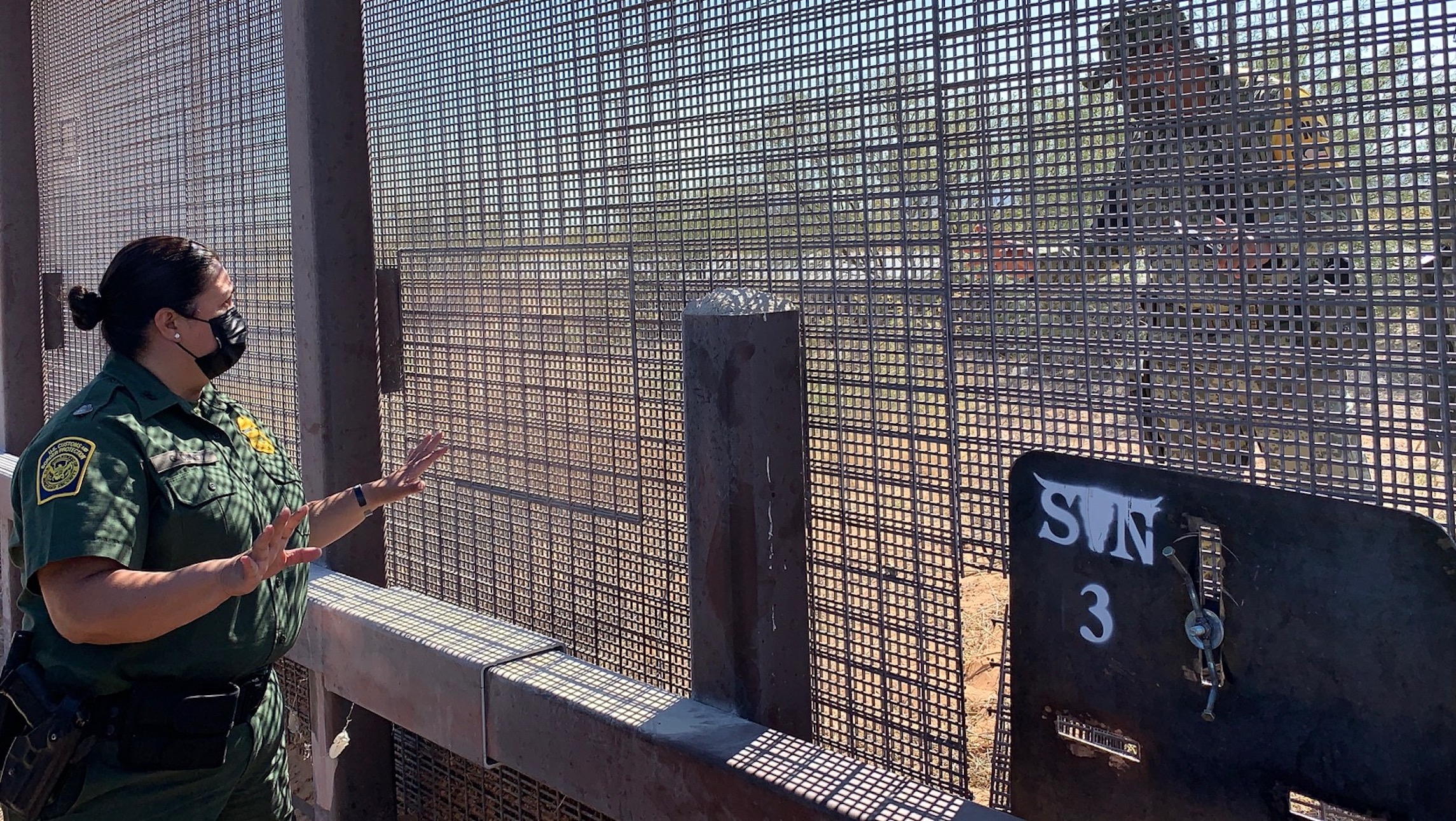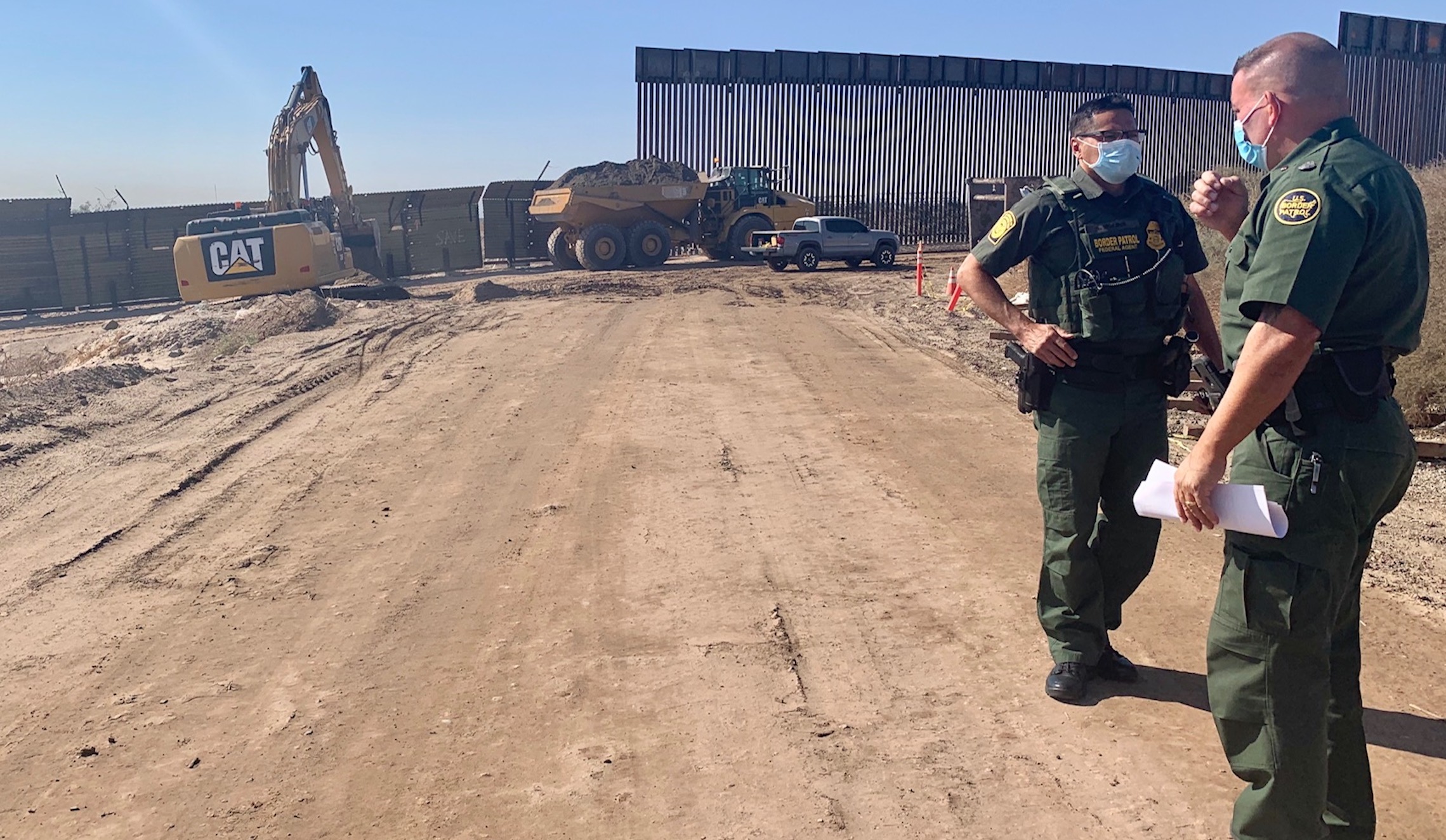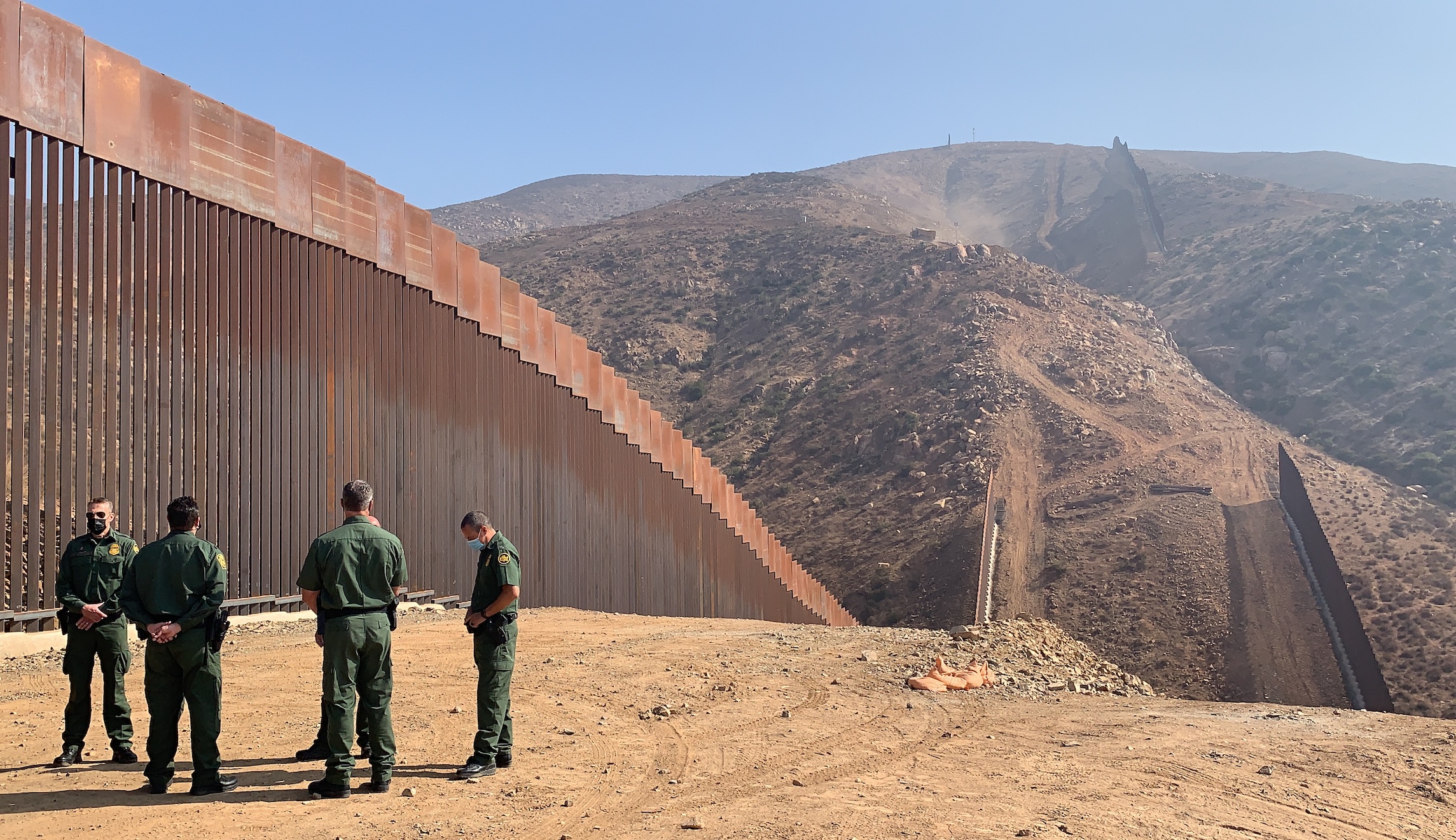The Trump administration will surpass 400 miles of new border wall, with roughly the same amount funded and headed for construction, as the country heads to the polls on Election Day.
The Washington Examiner traveled in late October to see existing wall from previous administrations, new barrier, and unfenced areas of the border in Texas, New Mexico, Arizona, and California to learn where the president’s 2016 campaign promise stands.
Thirty-foot wall now stands up and down the 2,000-mile border and marks a visible accomplishment for the Trump White House, even after critics claimed in early years that it was a silly idea, a waste of taxpayer money, and simply impossible to build.
Over the past four fiscal years, Congress passed budgets with $15 billion for 738 miles of a new border wall system, which includes new roads, lighting, a host of technology options, and the physical wall. Early on, the federal agency that planned where wall would go, U.S. Customs and Border Protection, determined that roughly half of the 700 miles of fencing that had been installed during the George W. Bush and Obama administrations was insufficient for blocking people from illegally immigrating into the United States.
Four-hundred of the 738 miles of wall funded under President Trump is for building new wall in areas with insufficient barriers. The remaining more than 330 miles are in places that have never had any sort of barrier.
Rio Grande Valley, Texas
Wall progress in the Rio Grande Valley has been slower than in other regions along the border. Seven miles have been completed. Another 103 miles are set to go up, which would be in addition to an existing 55 miles of barrier. Border Patrol agents in the valley are responsible for 277 miles of largely overgrown brush that runs along the international boundary river.
“We have a ways to go, but we’re getting there,” Jason Montemayor, a Border Patrol agent who leads its infrastructure and technology department, said during a tour in late October. “Real estate’s coming … Now that the contracts can go out and just work, work, work. So, we’re getting there. It’s speeding up.”
Southeastern Texas is the only place where the wall doubles as a levee system. Because of flooding in the region, government planners took longer to consider how to make a wall that could double as a device able to hold back water from a nearby river. A concrete structure was erected in front of higher ground, and an 18-foot slatted steel wall was mounted on top. The wall here is set back a mile or so north of the Rio Grande River because the marshy ground near the river could not support the project.

El Paso, Texas
New Mexico sits to the west of El Paso and falls under Border Patrol’s 264-mile-long El Paso region. Most of New Mexico and the western half of Texas have had a barbed wire fence or short fences to block vehicles from driving through — that is, until now. Construction workers have installed 109 miles of 30-foot border wall in this region.
An 18-foot mesh fence built during the Obama years in Sunland Park, New Mexico, is slated to be replaced. It is located in one of the busiest areas for illegal immigrant arrests on the border. Mexican highways run close to remote sections of the border, making it a prime spot to drop off migrants. Although the mesh fence is fairly tall, it is easily cut by smugglers almost every night, which is why it will be replaced.
Border Patrol Chief Patrol Agent Gloria Chavez pointed out one such breach that was made overnight. Five Mexican military members, all armed with automatic rifles, were inspecting the hole as Chavez pointed it out during a tour. Holes like these are big enough for people to get through, and last night, agents observed 75 people sneak through this one area.
“They can’t get through the [new] wall system. We know when they’re approaching the wall system. The lights are there for us at night, so we can see, operate, and see people much farther down than instead of a four-cell handheld flashlight that we all carry,” said Walter Slozar, division chief of operations for Border Patrol’s El Paso region.
New gravel roads run along the wall and allow access to spots where people may have climbed over. Previously, agents struggled to drive on sandy roads during and after heavy rains.

Yuma, Arizona
Border Patrol El Paso Chief Anthony Porvaznik’s agents are seeing a decline in the number of illegal migrants who get hurt while climbing over the border barrier now that 30-foot wall is up and the shorter wall is gone.
“Just the size of the infrastructure has had that impedance factor, where people are not trying to climb over it and come down on our side, so that’s reduced injuries,” said Porvaznik. “What that does is give us agents back in the field because we don’t have to be at the hospital” with injured crossers.
Yuma was among the first to put up border wall after Trump came into office. More than 100 miles of new wall is up, but Porvaznik says the ground sensors, cameras, and radars make the physical barrier even stronger because the patrol can monitor activity by the wall in place of agents.

San Diego, California
In Southern California, agents for decades were accustomed to caravans of vehicles flying through unfenced areas of the border. Scott said lessons from incidents like these are what he has learned in his 28 years with the Border Patrol and that the Trump administration’s support for improving border security allowed the Department of Homeland Security to look at each region’s unique challenges and respond appropriately.
“When this administration came in and they did the prototypes, that was the first time we were ever really funded and allowed to go outside and say, ‘Here’s all the lessons we’ve learned. Corporate America, how can we do this smarter, cheaper, better, faster?'”
A double-layer wall comprised of 18-foot and 30-foot barrier was put up so that if someone gets over the first wall, he or she cannot immediately disappear into a populated area.
Scott, who previously oversaw the San Diego region, said technology is part of improving border security but is not the sole answer. Standing at the top of a 2,500-foot-high peak in San Diego, he pointed to a ridge line in the distance.
“Between you and the farthest ridgeline is the largest land port of entry in the world, and you can’t see it,” said Scott, referring to a legal port of entry. “As soon as you get away from these big cities, we don’t have any cell coverage … That same technology, there’s nowhere for it to send anything.”
“If all I do is throw out technology, all I’m going to do is record ‘gotaways.’ Somebody still needs to be able to respond. I still need to slow him down. So that’s why we talked about the system … It’s all the pieces. It’s technology, it’s the personnel, the infrastructure, the access, but we need different levels of it in different areas.”


